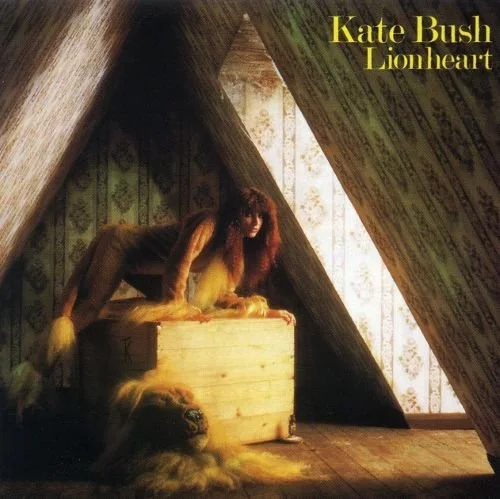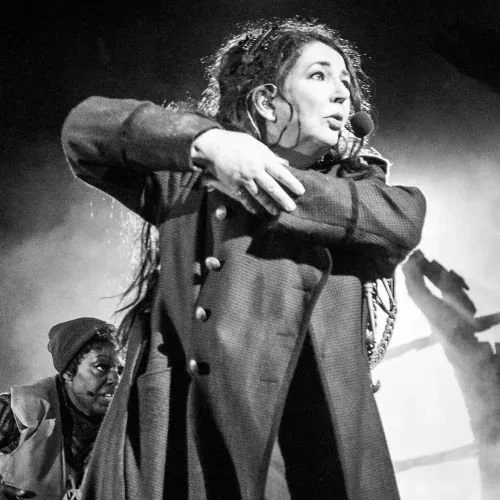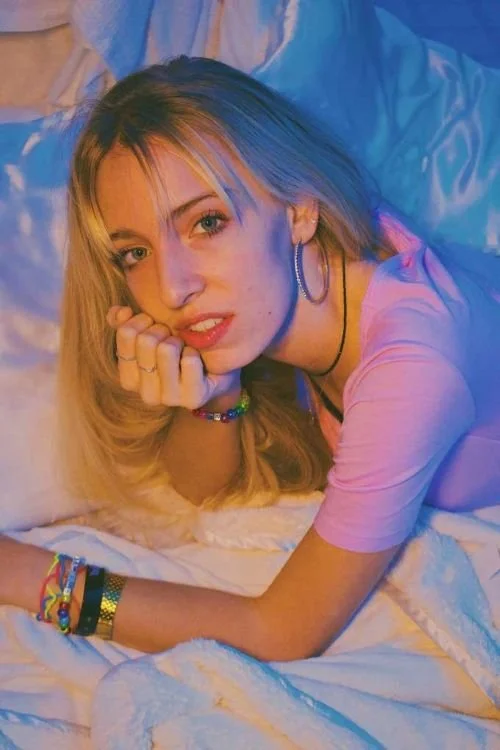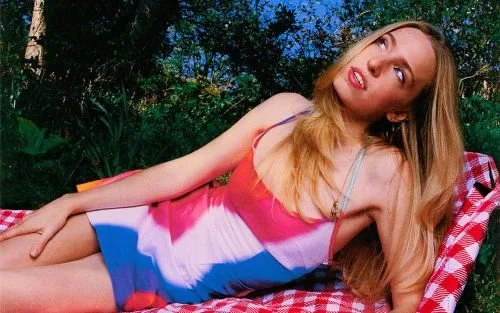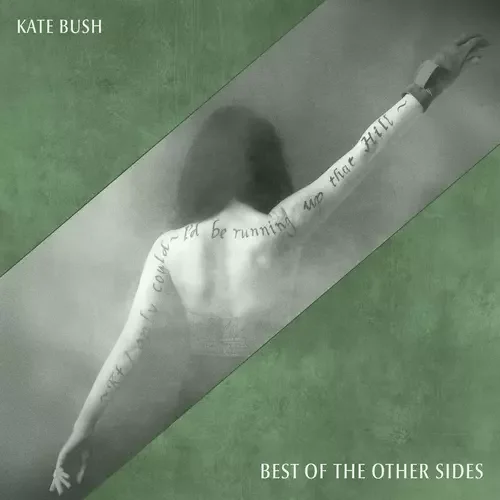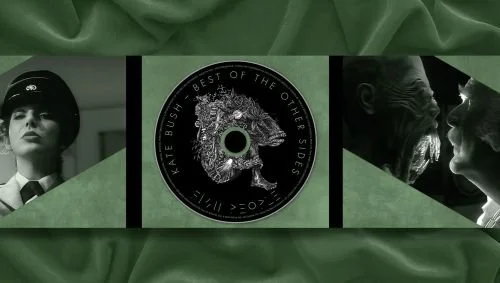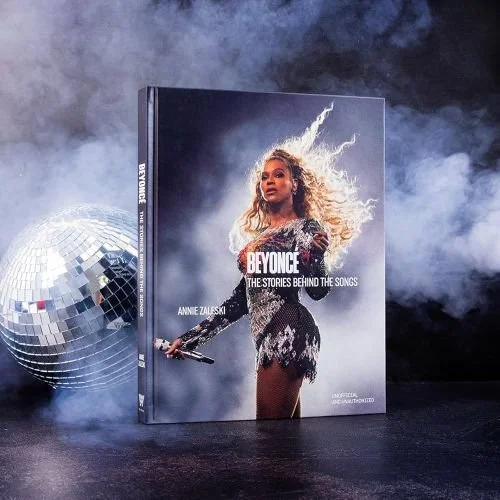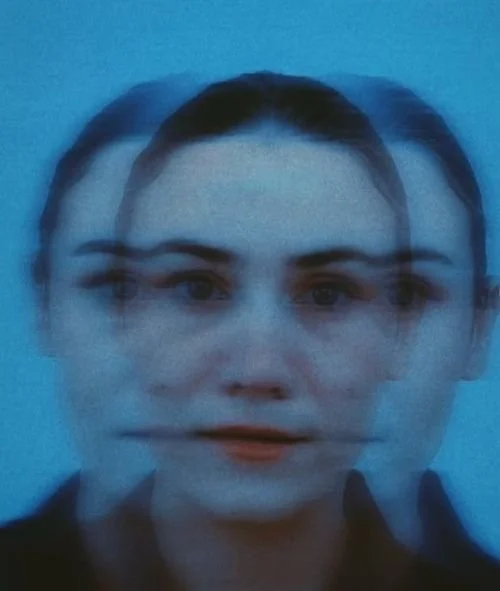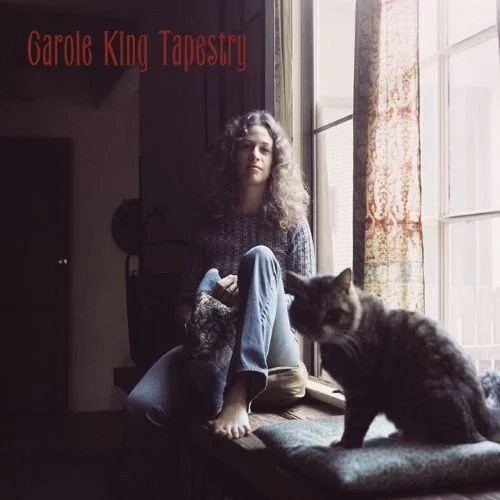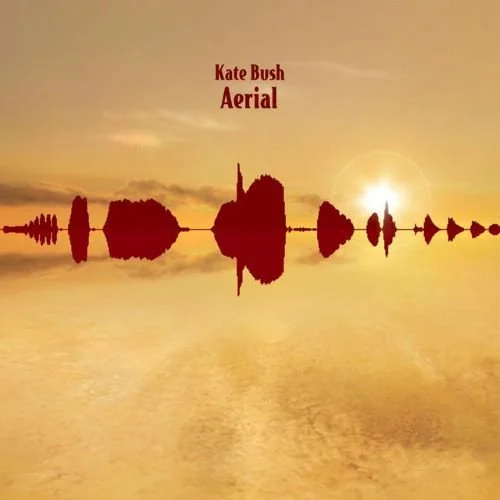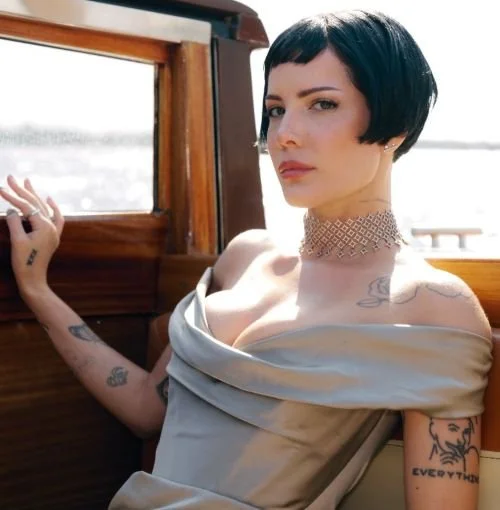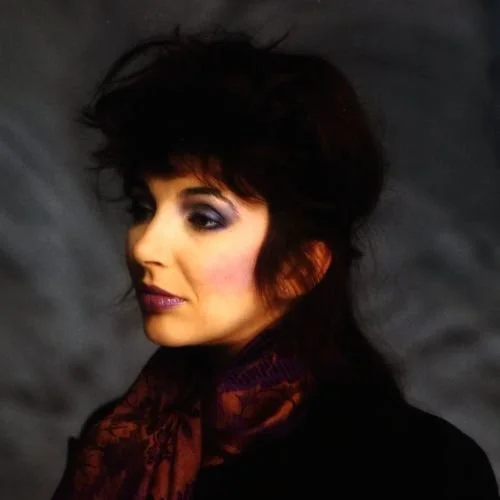FEATURE:
Fullhouse
Kate Bush’s Lionheart at Forty-Seven
__________
I can pretty much guarantee…
IN THIS PHOTO: Kate Bush in 1978/PHOTO CREDIT: Brian Aris
nobody else is going to write about Lionheart ahead of its forty-seventh anniversary on 10th November! This was Kate Bush’s second studio album. Released nine months after her debut, The Kick Inside, many see it as the ultimate sophomore slump. No blame should be placed on Kate Bush. The idea of being able to put out an album so quickly after her debut whilst she was promoting that album was insane! I have said before how EMI were too demanding and pushy. Even though Lionheart reached number six in the U.K., maybe a lot of that commercial success was down to people expecting something similar to The Kick Inside. There are some comparisons between the albums. However, you can hear more sonic flexibility on Lionheart. Coffee Homeground being this more eccentric and almost carnival-like song. I always think that was inspired by The Beatles’ Magical Mystery Tour. Fullhouse another standout that was actually one of the new songs written for the album. This, Coffee Homeground and Symphony in Blue were the new tracks. You can feel that. Kate Bush heading in a new direction. The Kick Inside is largely composed of songs written quite a while before they were recorded. Wuthering Heights was a late inclusion. For Lionheart, she did not have time to write a whole album of new tracks. She had to dip back in the archives for songs. Knowing that this was not an entirely fresh album from someone who would have wanted to write new material and have time do that must have been gutting for Kate Bush! She did say at the time how she preferred Lionheart to The Kick Inside. However, you can feel that her debut is better. Less feeling of it being rushed or a compromise.
If some do not like the production sound of Andrew Powell, you cannot argue that Kate Bush’s innate and staggering talent lifted Lionheart above nearly everything around it in 1978. When critics rank her albums, Lionheart places very low. Seen as this inferior album, I think it contains some of her best moments. Wow is one. Symphony in Blue. Kashka from Baghdad. Hammer Horror. Fullhouse. Extraordinary and distinct songs that she performed multiple times during The Tour of Life in 1979. In this anniversary feature, I am going to come to a couple of promotional interviews, as it is important to get a sense of what Kate Bush was saying – and what was being asked. I am going to start out with one of the very few positive reviews for it. This website makes some excellent points about Lionheart. Why it’s far superior than it is given credit for:
“Lionheart is not a perfect album yet its still a staggering achievement. Had it been the opening missive in Kate’s discography, jaws would have still dropped just as far. This record is a potent example of the complexity of Kate Bush and her audacious voice, charisma and songs. Had it been her debut, it may not have conferred upon her the instant mantle of “Icon” (as ‘Kick’ did), but that might have been a good thing.
Sure, Lionheart could have benefitted from more time in the bottle or… maybe not. Kate had all the time in the world to worry over The Dreaming. Was it a better record? I’ll let you know when I get around to listening to it as many times as I have Lionheart. Lionheart is a grower that is unique in her canon. Every track on Lionheart earns and rewards repeated visitations.
Let’s get the obvious out of the way. The song “Wow” is a wonderful confection of fantasy/pop. Equal parts torch ballad and bubblegum, it was a smart and successful single that could turn the heads of tabloid writers and music critics alike. And “England, My Lionheart”, is quite simply one of the most beautiful and unique melodies ever written. Usually in pop song craft you can hear echoes of the familiar; even if the artist is stealing from him/herself. This song exists on a different plane. That the lyrics are penned by a teenage girl is stupefying and magical. Why this song hasn’t been declared Britain’s national anthem is beyond me. It still might someday.
The epic “Hammer Horror” could be the subject of an entire review unto itself. By 1978, the term “Rock Opera” had become devalued currency. “Hammer Horror” is definitely a rock opera (albeit a tightly compressed and edited version of the form). Kate whispers, wails, moans and rumbles like both a siren and natural woman. She’s got some burr in her saddle in the form of a stalker, ex-boyfriend, ghost, or some unholy permutation of the three. Whatever happened, it’s now an ever-present nightmare of the soul. The tinkling piano ending turns the neat trick of being pretty and dissonant at the same time. The delayed reaction gong crash signals a melodramatic end to a brilliant and melodramatic record, and the cover art will rock your world.
Elsewhere, things get more eclectic and esoteric. “Coffee Homeground” courts Cabaret and Broadway and elevates both forms. Lead track, “Symphony In Blue” evokes a heavenly cocktail mix of Carol King on ecstasy and helium. On this album, even more than The Kick Inside, Kate takes her voice to its full, death defying limits. Many argue it takes listeners to their limits as well. Like Dylan, Kate’s voice is her signature, money maker, and albatross all rolled into one. One must come to the party prepared to marvel at her athleticism and then dig deep into the music itself. The rewards are there. Kate Bush is not a passive listen. We’ve got Sade for that. No, Lionheart is a three ring circus of emotion, estrogen and technique. And you know what? EMI put it out at just the right time. I’m glad we got two albums documenting Kate’s eloquent, teen dream genius. Soon our little girl would all grow up to be a woman. Lionheart didn’t do anything wrong, it’s just a matter of the paint on her masterpiece hadn’t quite dried yet”.
I might have sourced these interviews a few times when talking about Lionheart. However, it is important to come back to them. Marking this album forty-seven years after its release. Melody Maker spoke with Kate Bush in an interview published in November 1978. The year must have been head-spinning! How far she travelled and how many times she was interviewed. Even if many critics were a bit cold on Lionheart, Bush reflected on its more adventurous and ambitious spirit:
“Overall, Bush was concerned that the new album should differ quite radically from her first. Maybe I'm a bit too close to it at the moment, but I find it much more adventurous than the last one. I'm much happier with the songs and the arrangements and the backing tracks.
"I was getting a bit worried about labels from that last album: everything being soft, airy-fairy. That was great for the time, but it's not really what I want to do now, or what I want to do, say, in the next year. I guess I want to get basically heavier in the sound sense...and I think that's on the way, which makes me really happy.
"I don't really think that there are any songs on the album that are as close to .bf ital Wuthering Heights .pf as there were on the last one. I mean, there's lots of songs people could draw comparison with. I want the first single that comes out from this album to be reasonably up-tempo. <The first single was Hammer Horror .> That's the first thing I'm concerned with, because I want to break away from what has previously gone. I'm not pleased with being associated with such soft, romantic vibes, not for the first single anyway. If that happens again, that's what I will be to everyone."
She is acutely aware of the danger of being pigeon-holed, and is actively engaged in discouraging that.
"If you can get away with it and keep changing, great. I think it should be done because in that way you'll always have people chasing after you trying to find out what you're doing. And, anyway, if you know what's coming next, what's the point? If I really wanted to, I guess I could write a song that would be so similar to Wuthering Heights . But I don't. What's the point? I'd rather write a song that was really different, that I liked, although it might not get anywhere."
Have you heard her new single, Hammer Horror ? Now that's really different.
The major changes in the preparation for Lionheart was undoubtedly that Kate, over-burdened with promotional schemes for the first album, was for the first time left with the unsavoury prospect of meeting deadlines and (perhaps) having to rush her writing to do that. It was a problem she was having trouble coming to terms with at our last meeting, when she spoke in obvious admiration of bands like Queen--who came up with the goods on time every year, and still found time to conduct world tours.
But Kate insisted that she wasn't going to be rushed, and eventually the songs came along. In all, it took ten weeks to record the twelve tracks (ten are on the album), an indication of the meticulousness shown by Bush herself in exercising as much control as possible over every facet of the work. "I'm not always right, and I know I'm not," she says, "but it's important to know what's going on, even if I'm not controlling it."
I'll be interested to read the reviews of Lionheart . It'll be sad, I think, if the album is greeted with the same sort of insulting indifference that The Kick Inside met, when Kate Bush was pathetically underrated.
Lionheart is, as the artist desired, a heavier album than its predecessor, with Bush setting some pretty exacting tests for the listener. Kate's songwriting is that much more mature, and her vocal performance has an even more vigorous sense of drama.
Musically, the tracks on Lionheart are more carefully structured than before. There is, for instance, a distinct absence of straight songs, like the first album's Moving, Saxophone Song, The Man With the Child in His Eyes and The Kick Inside . Here, only Oh England, My Lionheart makes an immediate impression and I'm not sure that the move away from soft ballads (be it to secure a separate image) is such a wise one. As Bush proved on those songs on The Kick Inside, simplicity can also have its own sources of complication.
There is much about this album that is therapeutic, and often Kate Bush is the subject of her own course. Fullhouse is the most blatant example of that. <There is no evidence that this song is autobiographical.> On of the album's three unspectacular tracks musically (along with, in my opinion, In the Warm Room and Kashka From Baghdad ), it is still lyrically a fine example of ridding the brain of dangerous paranoias. The stabbing verse of "Imagination sets in,/Then all the voices begin,/Telling you things that aren't happening/(But the nig and they nag, 'til they're under your skin)" is set against the soothing chorus: "You've really got to/Remember yourself,/You've got a fullhouse in your head tonight,/Remember yourself,/Stand back and see emotion getting you uptight."
Even Fullhouse is mild, though, when compared to tracks like Symphony in Blue, In the Warm Room and Kashka From Baghdad, which exude an unashamed sensuality. Symphony in Blue, the opening track, is a hypnotic ballad with the same sort of explicit sexual uninhibitiveness as Feel It from the first album. "The more I think about sex,/The better it gets,/Here we have a purpose in life,/Good for the blood circulation,/Good for releasing the tension./The root of our reincarnation," sings Kate happily.
In Search of Peter Pan, Wow (running together on the first side) and Hammer Horror are are examples of Kate's strange ability to let the subconscious mind run amok in the studio. Wow is tantalisingly powerful and Hammer Horror (the single) is most impressive for the way it seems to tie in so many of the finer points of the first album and project them through one epic song.
That leaves three tracks, Don't Push Your Foot on the Heartbrake, Oh England, My Lionheart, and Coffee Homeground . All of them with totally contrasting identities but all succeeding in areas that many might have considered outside the scope of Kate Bush.
A few months ago, in the paper, Kate said how one of her musical ambitions was to write a real rousing rock'n'roll song and how difficult she found that task. James and the Cold Gun was her effort on The Kick Inside, and with Don't Push Your Foot on the Heartbrake she has tackled the art of writing a roasting rocker on her own terms. Heartbrake (another piece of emotional therapy) might not be considered a rocker in the traditional sense of racing from start to finish but it's still one of the most vicious pieces of rock I've stumbled across in some time. The chorus is slow, pedestrianly slow. The pace is deceiving. It slides into the chorus. Bush moves into a jog. Then the second part of the chorus. It's complete havoc, and when it comes to repeating that second part in the run-up to the end, Kate wrenches from her slight frame a screaming line of unbelievably consummate rock'n'roll power that astounded me. A rather unnerving turn to Kate's music, I think.
Then there's Coffee Homeground, influenced by Bertold Brecht and inspired by a journey with a taxi driver who was convinced that somebody was out to poison him.
For Oh England, My Lionheart, from which the album title is derived, Kate is expecting a barrage of criticism because of the blatant soppiness of the lyric.
Kate's reasons for writing the song are simple enough. She had always liked Jerusalem, and thought that a contemporary song proclaiming the romantic beauty of England should be written.
"A lot of people could easily say that the song is sloppy. It's very classically done. It's only got acoustic instruments on it and it's done...almost madrigally, you know. I daresay a lot of people will think that it's just a load of old slush, but it's just an area that I think it's good to cover. Everything I do is very English, and I think that's one reason I've broken through to a lot of countries. The English vibe is very appealing”.
I will round off in a minute. There were not that many print interviews with Kate Bush Lionheart. Most were for U.K. publications. That is a shame. Lionheart, in so many ways, did not get its dues. Kate Bush revisited The Sensual World (1989) and The Red Shoes (1993) for 2011’s Director’s Cut. I wonder if she would ever return to Lionheart and reapproach that album. That would be fascinating! Giving a fresh take to tracks like Don’t Push Your Foot on the Heartbrake and In Search of Peter Pan. Newcastle Evening Chronicle interviewed Kate Bush ahead of the release of Lionheart:
“Indeed, although Kate Bush has eased herself into public consciousness through a combination of eerie mysterious songs and a frail, delicate appearance, in person she comes across as much more like the traditional girl-next-door.
She does not go to discotheques or enjoy parties. Work is her only obsession. "lf I get time off I'd rather spend it at home," she says.
"I'm rather a down-to-earth domesticated person when I'm left to my own devices. I really do find things like cleaning and all that rubbish very therapeutic.
"If I get home with all these thoughts in my head about what's coming up over the next few days. I find that a bit of cleaning or washing up makes them go away."
She has also tried to keep in touch with her old friends, although she admits her sudden change of lifestyle over the last nine months could make a point of contact difficult.
Kate goes on: "My best friend is a girl I used to know at school. She is a telephonist.
"Whenever I'm free, I'll call up and she'll come over with her husband. I don't sit there and say 'Oh I've just got back from Tokyo and you should have seen all the money around,' and so on. Why should she wantant to know about that?
"I do have a boyfriend at the moment, but the trouble with this business is that you can't really have a strong, emotional relationship on a continuous level because you're not in one place for long.
"It's what you could call on uninvolved relationship. He's not in the music business and sometimes I'll call him up and we'll go out somewhere.
''I do occasionally miss not being able to have a close relationship, but I can't complain really. I'm just so lucky to be m this position of having so much work."
Towards the end of this month Kate Bush's second album, Lionheart, will be released in Britain. The initial demonstration tapes were recorded in her brother Paddy's studio at her parent's home and the album was completed earlier this month in Nice. Paddy, 25, will also be part of her backing band when she goes on tour.
As for the album, Kate explains that it willill consist of a mixture of rock 'n'roll and ballads.
''After the success of 'Wuthering Heights', I was worried that people would just think I was simply a squeaky voice. That single was quite bizarre in a way and I was afraid people just liked it for the novelty value rather than for the music.
"I think the last record, 'Tile `.ian . with the Child in his Eves' did a lit al to get away from that because it was in a lower key for a start.
"It would have been terrible if I'd had to spend the rest of my life squeaking and very sore on the tonsils, I should think”.
I am going to end with a few reactions from Kate Bush. Interviews where she spoke about Lionheart. I will start with some critical reactions. As you can see from the reviews below, Kate Bush was having to fight off sexism and misogyny. Those critics who were attacking her in addition to the music! Even though Bush admits it was a rushed album and did not turn out how she would have wanted, she does say how good it is. A fact that was lost on the music press in 1978! They should have shown a lot more respect for an album far more interesting than a lot of the Punk drivel and repetitiveness that was popular:
“‘Mature’ lyrics sung in that twee irritating schoolgirl-siren voice… Actually most of the time she’s nearer a vague British lineage – Barbara Dickson to Lynsey de Paul – than a Joni/Janis wonderland.
Ian Penman, NME, 25 November 1978
A product which is at best moderate, lacking and often severely irritating… The feel is often bland and soulless. Strictly MOR with a clever tinge. This is flat conceived silliness. I simply dislike it.
Chris Westwood, Record Mirror, 25 November 1978
I love her and I hate her and you all feel exactly the same way only you’re too unreal to confess the terrible crime. You have to take her seriously in spite of all the flying sneers and jeers. The songs themselves aren’t individually strong at all. It’s more the aura she creates.
Dave McCullough, Sounds, 25 November 1978
“It was a difficult situation because there was very little time around and I felt very squashed in by the lack of time and that’s what I don’t like, especially if it’s concerning something as important for me as my songs are, they’re really important to me. But it all seemed to come together and it was really nicely guided by something, it just happened great. And there were quite a few old songs that I managed to get the time to re-write. It’s a much lighter level of work when you re-write a song because the basic inspiration is there, you just perfect upon it and that’s great. And they’re about four new songs so they all came together, it was great. In fact, we ended up with more then we needed again, which is fantastic.
Lionheart Promo Cassette, EMI Canada, 1978
I had only a week after we got back from Japan to prepare for the album. I was lucky to get it together so quickly. But the songs seem to me, now, to be somewhat overproduced. I didn’t put enough time into them.
Richard Laermer, Kate Bush Touches the U.S. At Last, Pulse!, 1984
It was rushed and that was responsible for me taking as much time as possible over albums. Considering how quickly we made it, it’s a bloody good album but I’m not really happy with it.
John Aizlewood, Love, Trust and Hitler. Sounds (UK), November 1989”.
You can pick up Lionheart here. Turning forty-seven on 10th November, I wanted to show some love for it. I don’t think anyone is going to bother to revisit it. Diehard Kate Bush fans will show their love on the day, yet most people have not heard Lionheart or know just how incredible it is! Ten varied and wonderful tracks from an artist who was only twenty when it was released, Bush would make big changes. In 1979, she went on tour and designed everything in her own image. She was tiring of working with another producer. 1980’s Never for Ever was produced with Jon Kelly, yet that was the final time she would share that role. I wonder how Bush sees Lionheart now. It is a wonderful album she should be proud of. Despite it not being as complete and impactful as The Kick Inside or Never for Ever, that is not to say it is a failure or sophomore slump. Instead, it was a hugely impressive release given the constraints placed on her by EMI. Far from being a bad album, Lionheart is…
SO close to being a masterpiece.

